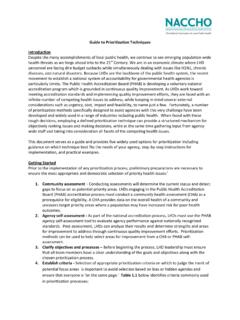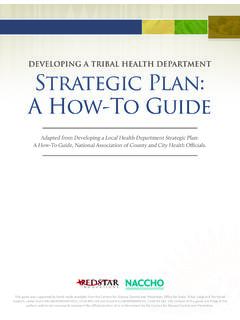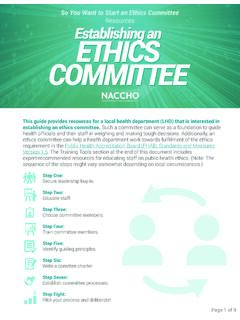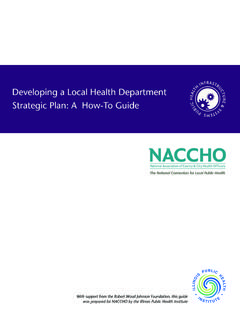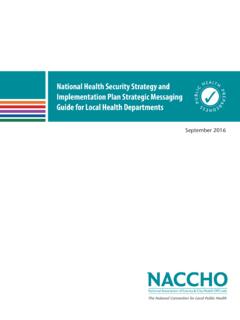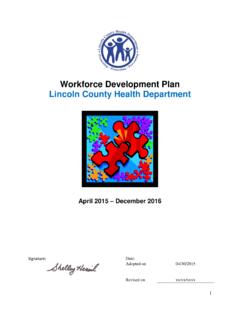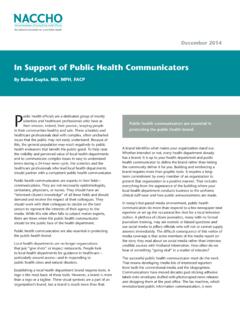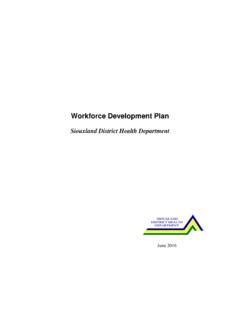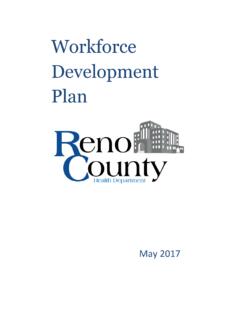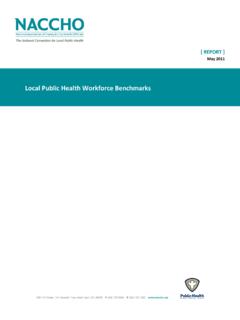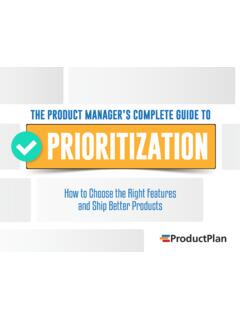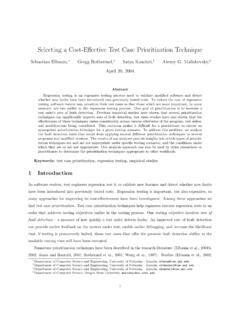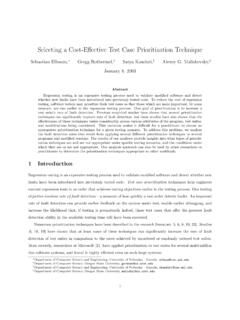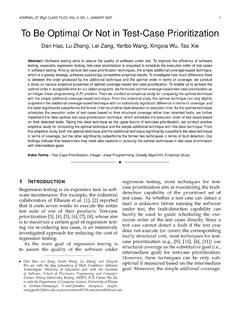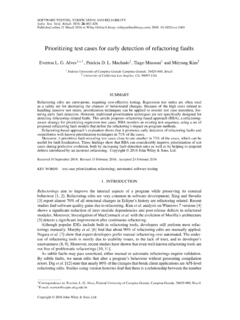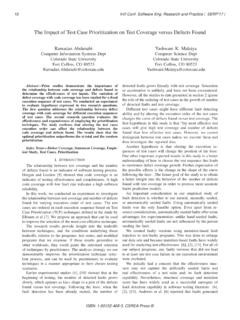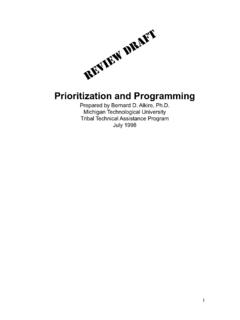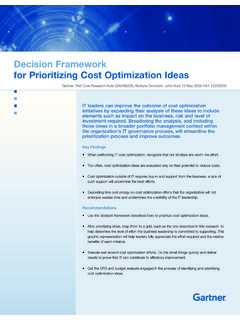Transcription of QI Project Prioritization and Selection Process - naccho.org
1 QI Project Prioritization and Selection Process To ensure a consistent Process for identifying and selecting QI projects that have the greatest potential for impact, and to further formalize a QI program, local health departments (LHDs) should outline a Process for identifying and selecting QI projects. This Process was designed to be based on agency performance data to ensure Selection of projects with the greatest impact on outcomes, alignment with strategic directions, and to empower all staff to provide input on the Project Selection . Outlined below is a typical QI Project Selection Process : 1. Identify potential QI projects - This step should result in several Project ideas derived from various sources: a. Performance Data To the extent possible, QI projects should be identified from the agency s performance data, , the performance management system.
2 Processes, services, products, and business practices demonstrating chronically poor performance should be prioritized. Types of performance data could include financial reports, customer satisfaction data, web statistics, evaluations, health assessment data). b. Community health improvement plan/Agency Strategic Plan The community health improvement plan and strategic plan define the community and agency vision and include specific goals and objectives to achieve that mission. Progress against these goals should be monitored within the PM system, and those that are unmet should also be prioritized when selecting QI projects. c. Customer Satisfaction Data Customer feedback ( community partners, funders, health department clients, and community members) should be incorporated into the Project Selection Process (and Project implementation, as appropriate).
3 D. Agency Staff All staff should be engaged in QI and have a voice in the Project nomination Process . Upon receipt of basic training on QI principles and Project Selection criteria, staff can submit through a chain of commands, a designated recipient on the QI Committee, employee satisfaction surveys, anonymous submissions, etc. Project nomination forms can be used to ensure suggested projects are suitable for QI ( is there a Process already in place? Is data collection feasible?) 2. Screen Project Nominations - The QI Committee should be responsible for screening all nominations through the SMART criteria to determine whether it is appropriate to address the issue with QI: Specific Is there an existing Process that can be defined as the focus of the Project to achieve the desired outcomes?
4 Measurable Is baseline data available or easily attainable? Is data collection feasible to determine whether or not a change is an improvement? Achievable Can the Project be scaled down to conduct a small test? Is the Project within the realm of influence? Relevant Is this a chronic problem awaiting a solution for a long time? Is the Project significant enough to merit resources? Is there motivation to work on this? Time specific Is this achievable within a relatively short timeframe? If the response to any of the above SMART criteria is no, the Project should not be selected and/or should be reframed to meet the criteria. 3. Prioritize and Select Projects - After screening the potential projects, the QI Committee should agree upon additional criteria and a formal Prioritization Process ( Prioritization Matrix, Multi-Voting) to select the highest priority projects.
5 Common criteria include, but are not limited to: Impact Which projects have the greatest potential for impact? Urgency What risks are associated with not addressing this problem? Alignment Does the Project align with the agency strategic plan and/or CHIP? Longevity Will the Project address a program or service that is likely to go away? Resistance Is the Project likely to meet resistance from internal or external stakeholders? Feasible Do resources and expertise exist to implement this Project ? Resources for Prioritization methods include the Public Health Memory Jogger and NACCHO S guide to Prioritization Techniques.
